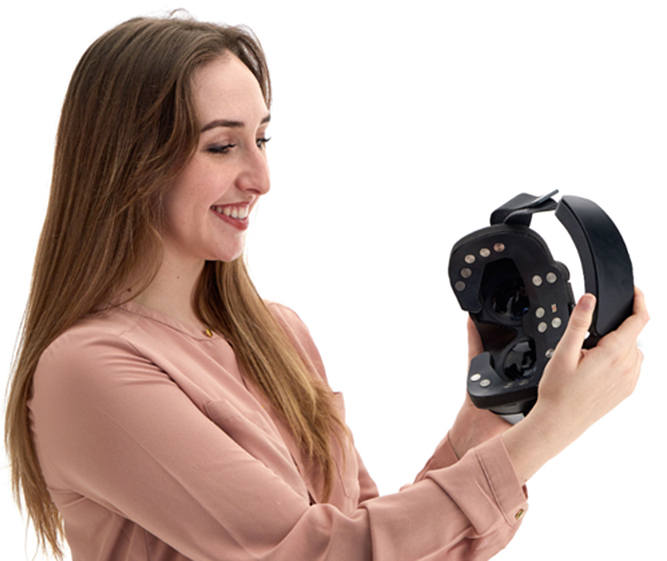Therapists
Improve Facial Palsy is a state-of-the-art, integrated sEMG solution, developed by scientists and clinicians in the treatment and management of Facial Palsy, based on decades of scientific research.
Benefits of Improve vs traditional sEMG
- Fully Integrated
- Wireless
- No messy gel
- Easy to understand results
- Simultaneously measure 4 sets of muscles at once
- Includes heart rate sensor for stress biofeedback
- Specifically designed for facial expression training
- A complete, integrated solution for your and clients, provides you with a unique insight into their progress
- No installation or technical training required
- A full range of therapy scenarios, from relaxation to muscular therapy
- Effective in tracking measurable progress over time
- Objective data to demonstrate improvement
- Research suggests that VR therapy increases retention by up to 30% and is appealing to a wide range of clients
Using Surface Electromyographic (sEMG) Feedback
sEMG feedback is an important tool in neuromuscular retraining of facial palsy. Its purpose is to bring the normally unconscious control of specific muscles under conscious control. sEMG feedback provides the patient with immediate information regarding the rate and strength of muscle contraction as it occurs in real time.
It also provides important information regarding coordination of muscles in cases where faulty movement sequencing results in a condition known as “synkinesis”. sEMG monitoring of facial muscles during the facial retraining process can lead to modification of facial movement patterns by allowing the patient and therapist to “see” what is occurring under the skin that may not be visible to the eye.

Benefits
As part of a facial neuromuscular retraining program, sEMG
feedback is used as an evaluative, as well as therapeutic tool to:
Normalise muscle tone
at rest
Promote activity in
weak muscles
Decrease activity in
hyperactive muscles
Improve coordination of
muscle groups

How it works
Surface electrodes placed on the skin over the muscles being monitored detect electrical activity produced by the muscle contraction. The signals are amplified and displayed on a video monitor. Muscles on the affected side of the face can easily be compared with the corresponding muscles on the unaffected side. As the patient watches the graph in real time on the monitor, the movement pattern can be adjusted until it is symmetrical with the unaffected side. This is especially helpful in the treatment of synkinesis, where the focus is on improving the coordination and sequencing of muscles rather than simply strengthening them.
During sessions, the sEMG biofeedback information is correlated with mirror and sensory feedback. Using this approach, the patient can learn to reproduce the new movement patterns accurately and practice them anywhere and anytime. Over time, with enough practice, the new movement patterns can become more automatic during spontaneous expression.
